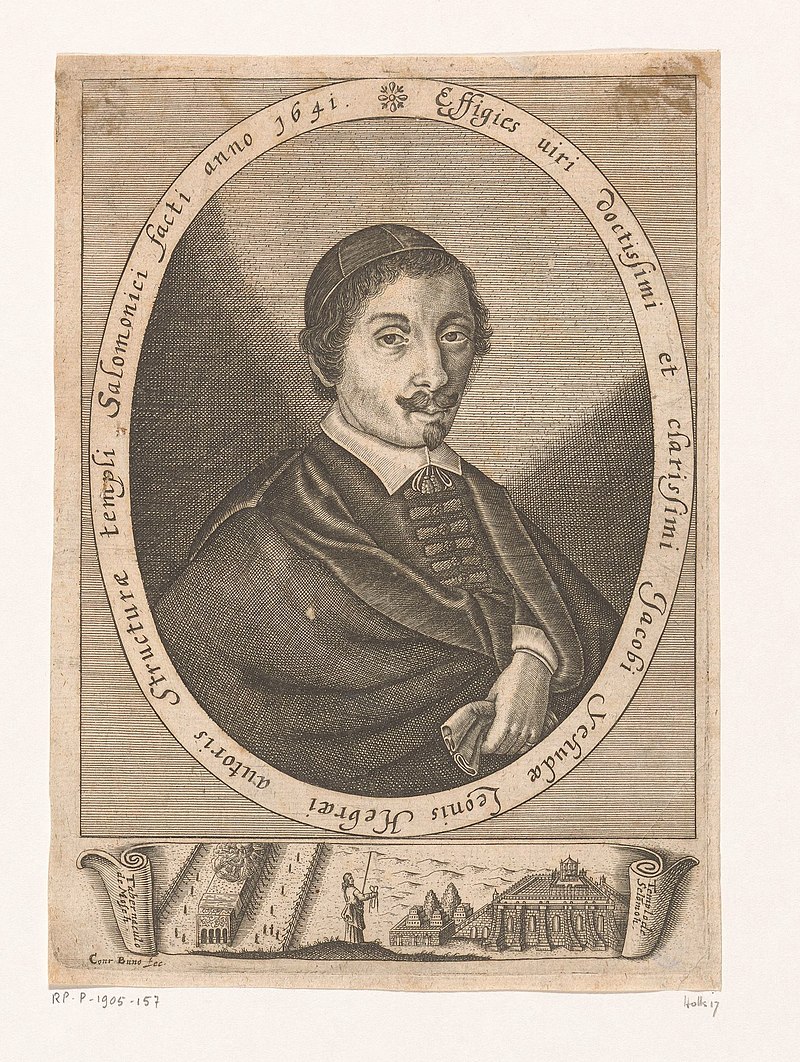Jacob Judah (Aryeh) de Leão Templo A Converso Scholar, a Jewish Hakham1
by Marvin J. Heller2
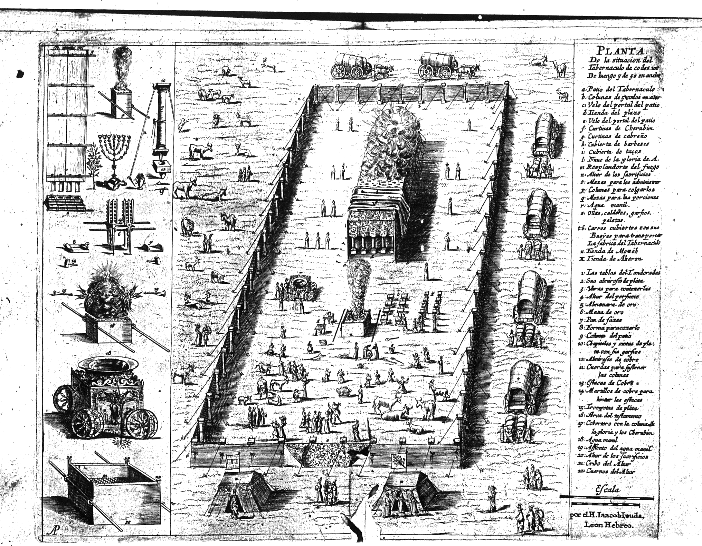
Figure 1. Model of the Tabernacle
Courtesy of the Library of Agudas Chassidei Chabad Ohel Yosef Yitzhak
In 1642, R. Jacob Judah (Aryeh) de Leão Templo (1602/03–1675) published Afbeeldinghe vanden Tempel Salomonis, a description of the Temple built by King Solomon, the first Temple in Jerusalem, and, in 1654, Retrato del Tabernaculo de Moseh, a detailed two-part work in Spanish describing the Tabernacle that accompanied the Israelites in the midbar (wilderness). The author, while a multi-faceted and intriguing individual, is best remembered, indeed, particularly remembered for these works. The name Templo, which is how we shall refer to him in this paper, was added to the family name of Leão by his son Solomon due to his father’s devotion to the study of those subjects. Templo might be said to reflect an aspect of the converso experience, that is, the multi-cultured and diverse nature of his life and compositions.
Templo has been the subject of articles and encyclopedia entries, several cited in this paper. While this article will summarize his background, emphasis here is on his literary accomplishments, highlighting and describing several of his varied works written in Spanish, Portuguese, and Dutch, as well as in Hebrew. He was the son of Abraham de Leão and Felipa de Fonseca, who experienced the expulsion from Spain in 1492. A. K. Offenberg suggests that Templo was born in the Portuguese coastal town of Coimbra, his parents fleeing to Amsterdam where they embraced Judaism.3
In contrast, A. L. Shane writes that our information as to Templo’s birth is known, stated by him in the preface to a paper he delivered to the Jewish Historical Society of England on 12 March, 1975. He quotes the preface to Las Alabamas de Santidad (Amsterdam, 1671) in which Templo writes “'my work . . . which I compiled in the space of seven months, in the moments of leisure from the exercise of my school duties, [a haste] so inconsistent with [my] sixty-seven years.” Templo does not give his exact place of birth which is unknown. Nevertheless, Shane writes that we do know of a surety that he was of Spanish-Portuguese origin. He notes that Hamburg is suggested as his place of birth. While that is uncertain it is clear that he came to Holland at an early age and resided there for most of his life.
Shane also writes that albeit being a teacher and rabbi, Templo “was a teacher and Rabbi by profession. As such, Leon must be unique in Jewish history, for there cannot have been many Rabbis who became famous not so much for their learning as for a travelling exhibition or show, which was widely exhibited for many years and which received Royal Patronage and approval.” Shane is referring to an exhibit of the Temple of Solomon and the Tabernacle of Moses. One of the pictorial designs in it was adopted as the coat of arms of his Grand Lodge of Free masons.”5
Templo studied under his uncle R. Isaac Uziel (d. 1622), as well as such prominent figures as R. Isaac Aboab da Fonseca (1605–1693) and R. Manasseh Ben Israel (1604–1657). Shane writes that Templo’s primary occupation, throughout his life, was that of a “Rubio’ or teacher” beginning at an early age, possibly as early as thirteen, progressing from student teacher to Rubi, combining that position with his various rabbinic responsibilities.6 In 1628/29, Templo served as rabbi of the house-synagogue of the Cardozos in Hamburg, succeeding R. Isaac Athias. He subsequently was in the congregational school in Amsterdam, and, in 1639, was appointed rabbi in Middelburg, a municipality in south-western Netherlands. In that location, Templo was financially supported by the Christian Orientalist and collegiant Adam Boreel (1602-65), with whom he translated the Mishnah into Spanish “a chiliastic project” for the former. In connection with that work, Templo constructed a wooden model of Solomon’s Temple which made him famous.7
Before describing several of Templo’s works, it should be noted that he was a prolific author. A. K. Offenberg records as many as twenty-one editions in a bibliographic listing of Templo’s works on or related to the Temple of Solomon, many today notable for their rarity. Offenberg informs that of these works one is preserved in a single copy only, five in two copies. The rarity of his works is not a modern phenomenon. It appears that even centuries ago several of Templo’s works were rare, difficult to obtain. Among the examples of this is cited by J. Saubertus, who prepared a Latin edition of the Temple description; he wrote that in 1665 a Portuguese Jew, “a friend of Leon’s,” had tried in vain to find the Spanish edition of the book on the Temple.8
I
Templo’s first work, Afbeeldinghe vanden Tempel Salomonis a description of the Temple of Solomon, was printed in Middelburg in 1642 by Symon Moulert. This title reflects, no matter what his work or assignment, that Templo’s main interest, the architecture of the Tabernacle and the First Temple. It is a small book in format, a quarto (40: [8] 1-49 [1] pp.), written in Dutch. In the same year, a Spanish version was published, entitled Retrato del Templo de Selomoh. Both editions have a similar title-page adorned with the crowned coat of the Province of Zeeland, and about it two human figures, two ships, fruits and foliage.9

Figure 3. Retrato del Templo de Selomoh
Courtesy of the National Library of Israel

Figure 4. Afbeeldinghe vanden Tempel Salomonis
Courtesy of the National Library of Israel
The Temple of Solomon was soon republished, including a French edition, Portraict Dv Temple de Salomon (Amsterdam, 1643); a second Dutch edition (Amsterdam, 1644); a Latin edition, Libellus effigiei Templi Salomonis (Amsterdam, 1650) with Hebrew reflected in its two title-pages; a Ladino edition, Livro de la Forma de el Palacio (Salonika, 1875/7); and Tavnit Hekal (described below), a Hebrew edition. The latter was translated into Hebrew language by Templo himself. An English edition, An Accurate Description of the Grand and Glorious Temple of Solomon, translated M. P. Decastro “proprietor of the said Model, and a near Relation to the Author” was published in 1675 and reprinted in 1778.

Figure 5. Tavnit Hekal
Courtesy of the National Library of Israel

Figure 6. Libellus effigiei Templi Salomonis
Courtesy of the National Library of Israel
The title of Tavnit Hekal, from “our daughters are like corner stones, crafted in palatial form (tavnit heikal)” (Psalms 144:12), was printed in Amsterdam by Judah ben Mordecai and Samuel ben Moses ha-Levi, in quarto format (40: 38ff). A border comprised of multiple rows of florets surrounds the text of the title page, stating that it is:
the form of the Temple, examined
in great brevity, of the house “that king Solomon made” (I Kings 7:51,
Jeremiah 52:20) for the Lord, with all its ordinances and all its forms,
that are found in it from the time it was founded on the holy mount
until the time that the wicked Titus made it a desolation . . .
And further, on all the precious
utensils used in the service, each according to its work, none lacking:
And from these also the work of the Tabernacle. . . .
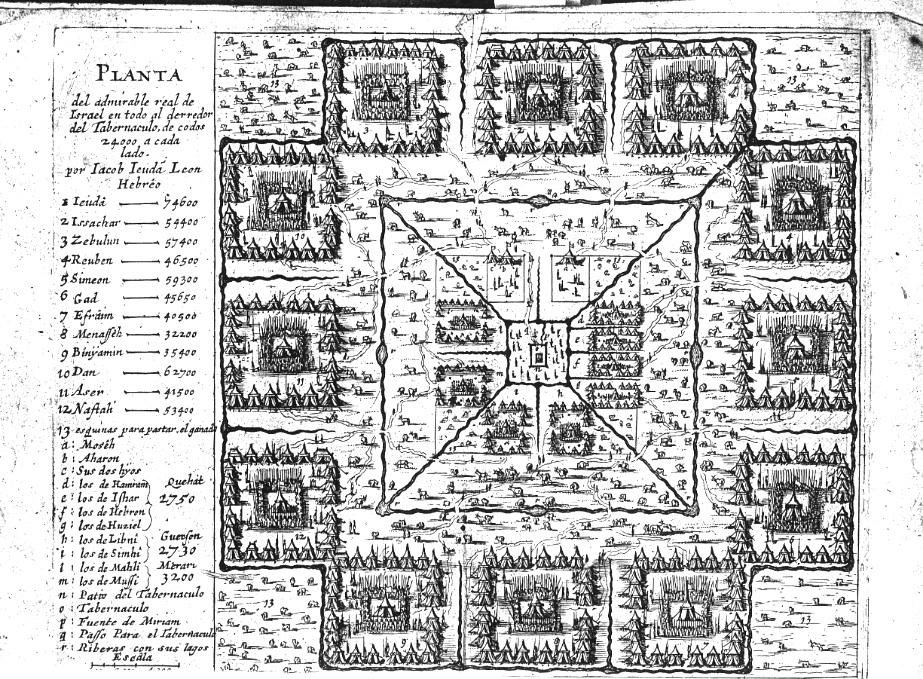
Figure 7. Model of the Tabernacle
Courtesy of the Library of Agudas Chassidei Chabad Ohel Yosef Yitzhak
The title page is dated, “The Lord is in his holy temple קדשו (410 = 1650), the Lord’s throne is in heaven” (Psalms 11:4). The title page of Tavnit Hekal informs that all the utensils used to minister in the Temple are described and that it was originally published in another language and has been translated into Hebrew by R. Jacob Judah Aryeh (the author). The title page is followed by a Latin title page, two pages of privileges to print, both issued in 1642 for fifteen years from the States-General of the United Dutch Provinces, the second from the States of Holland and West-Friesland, here translated into Hebrew. Several laudatory poems follow from R. Saul Morteira, R. Isaac Aboab, R. Samuel Jessurun, and R. Aaron Sarphati.
Templo’s introduction follows, in which he describes the structure of the book and informs that is but a small portion of what he knows on the subject is included. A dedication to the officers of the Sephardic Congregation Talmud Torah, and the text in a single column in square letters appears next. The four parts of Tavnit Heikhal, which are further subdivided into chapters, are a general overview of the Temple, the structure of the building, its utensils, and the other related structures on the Temple Mount. The volume concludes with an index. There are two fold-out illustrations, one above as the article header the other above.10
Templo also constructed a celebrated wooden model of the Temple which gave him renown and stature. This accompanying model displayed and described in the 2018 Kestenbaum auction catalogue as: “the large folding engraved plate of the Temple, Here, hand-colored. DEDICATION PAGE SIGNED BY THE AUTHOR IN HEBREW.” Afbeeldinghe vanden Tempel Salomonis is described in the catalogue as a “treatise is an explanation to the exterior, interior and ritual objects of the Temple of Solomon. It accompanied the model the author created that received wide acclaim.”11.

Figure 8. Model of theTemple
Courtesy of Kestenbaum & Co.

Figure 9. Retrato del Tabernaculo de Moseh
Courtesy of the National Library of Israel
It has been suggested that some of the illustrated copper engravings in Templo’s book on the Temple might be the work of Pieter Willemsz and other artists.12 The work on Solomon’s Temple was followed by illustrated treatises on the Ark (Tratado del Arco del Testamento, Amsterdam, 1653), the cherubim (De Cherubinis tractatus, Amsterdam, 1647, Tratado de los Cherubim, 1653/54), and the Tabernacle (Afbeeldinge van den Tabernakel, 1647 and 1669, Retrato del Tabernaculo de Moseh, Amsterdam, 1654; Eng. tr., 1675). Templo was not only an artist, who illustrated his books himself, but a collector of pictures. For his private museum at Amsterdam where he sold his books and the copper engravings, he also constructed a model of the Tabernacle and a scale model of the Israelites in the desert.
In concluding the section on Templo’s work on the Temple and Tabernacle, H. Graetz’s summary comments are worth noting. He writes:
Templo’s model of the Temple and its vessels, based on the Bible and Talmud, was “on a reduced scale (3 yards square, 1 ½ in height). . . . Work of so unusual a character attracted extraordinary notice at a time when every kind of antiquarian learning, especially biblical, was highly prized. The government of Holland and Zealand gave the author the copyright privilege. Duke August of Brunswick and his wife Elizabeth wished to possess a German translation of Leon’s description and commissioned Professor Saubert of Helmstadt, to undertake it. While corresponding with the author so as to ensure thoroughness, he was anticipated by another man who brought out a German translation at Hanover. This circumstance cased great annoyance to Professor Saubert.13
Graetz concludes that Templo partook in controversy with Christian ecclesiastics and that he published a translation of Psalms in Spanish, discussed below.
II
After 1643, Templo became a teacher (instructor) in the Etz Hayyim Talmud Torah in Amsterdam, replacing Manasseh ben Israel as the sixth grader teacher in that school.14 It was there that Templo prepared a vocalized edition of Mishnayot, printed in 1646 in two small octavo format volumes measuring 16 cm. ([1], 113, [114]-274 ff.). They were published by “Joseph ben Israel in the house of his father Manasseh ben Israel”; Joseph being Menasseh’s younger eighteen year old son who was then running Manasseh’s press. The Mishnayot was financed by the Amsterdam non-Jewish merchants Arent Dirk Bos and Ameldone Leeuw on the condition that Menasseh correct the proofs. The Mishnayot was issued in 4,000 copies, for which Menasseh received f2200 but he was responsible for procuring the paper.15
The title-page with a pillared frame, states that it is with the textual variations and numerous annotations that are taken from the Tosefot Yom Tov (Yom Tov Lipmann Heller, 1579–1654) and the glosses of Solomon Adani (1567-1630). Prefaces from Manasseh ben Israel and Templo are included, and, at the end of the second volume, the colophon of the compositor, Reuben bar Eliakim of Mainz, appears. At the end of the volumes, is a glossary of difficult and foreign words prepared by Menasseh. Templo was assisted in this work by Adam Boreel, a Dutch theologian and Hebrew scholar.16

Figure 10. Mishanyot, 1646, Mishnayot (vocalized)
Courtesy of the National Library of Israel

Figure 11. Mishanyot, 1646, Mishnayot (vocalized)
Courtesy of the National Library of Israel
Steven Adler writes that John Dury, a Calvanist minister, and Boreel, a leader of the Collegiants in Amsterdam and a friend of Menasseh, collaborated on this project, with vowels intended for easy reading and with accompanying Latin. According to Dury, this Mishnayot was for two distinct audiences, the “common sort of Jews,” and as an instrument to conversion. It was for that reason, according to Boreel, if Jews were to read it no Christian’s name should be on it. Adler adds, however, that “Rabbi Leão, of course, certainly did not share his collaborators’ conversionist aims.”17 It should be noted that the Mishnayot not only did not have Latin but also did not have the accompanying commentaries noted on the title-page.18
III
Also published in 1671 was Kodesh Hillulim (Las Alabancas de Santidad) (Amsterdam), a translation of Psalms in Spanish with accompanying paraphrase and glosses by Templo. Kodesh Hillulim was published in octavo format (80: [32], 458, [6] pp.) The Hebrew title is from “. . . all its fruit shall be holy for praise (kodesh hillulim) giving to the Lord” (Leviticus 19:24).
The text of the title page of Las Alabancas de Santidad is entirely in Spanish, except for the title, Kodesh Hillulim, and verses about the sides. That text informs that it is a translation of the Psalms of David with an informative paraphrase and notes. The title page is followed by the dedication to Illustrissimo, Isaac Senior Teixéyra, financial agent in Hamburg of Queen Christina of Sweden (residente de su Magestad, la Reyna de Suedia) and informs that Templo was the author of Del Retrato del Templo de Selomoh. The printer is not named.
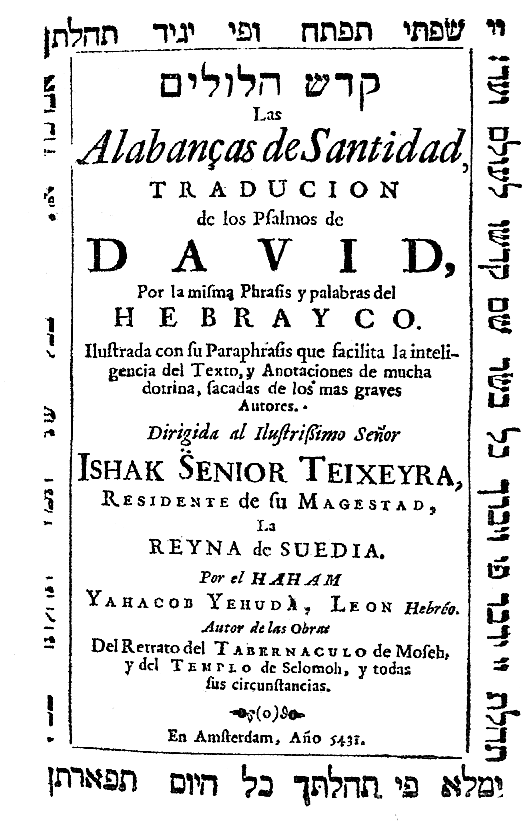
Figure 12. Kodesh Hillulim (Las Alabancas de Santidad)
Courtesy of Virtual Judaica
Las Alabancas de Santidad has several approbations signed by seventeen rabbis, primarily in Spanish and also in Portuguese, followed by pages of verse in praise of the work in Hebrew by R. Moses Raphael de Agular, R. Isaac Aboab, R. Josiah Pardo, R. Solomon de Oliverya, R. Daniel Belilos, and R. Isaac Sarruco. These are followed by a Spanish poem by Daniel Levi de Barrios, a converso and one time soldier; a sonnet in that language from Jacob de Pina; and verse in Latin from Isaacus Gomesious Sossa to Jacobi Judæ Leonis. A lengthy preface (24-32) signed by Leon Hebreo (the author), informs that the entire work was written in seven months, completes preliminary matter.
The text, which reads from left to right, is comprised of Psalms in vocalized Hebrew with cantillation in the left column. Facing it is the literal Spanish translation in the right column. The paraphrase is located below the two columns; at the bottom of the page are the glosses in italics. Psalms are preceded by a Spanish introduction, also in italics. The volume is completed with an index, De las cosas desta obra.
IV
In addition to the works described above, Templo was also the author of a number of additional titles. Among them are De Cherubinis tractatus (Amsterdam, 1647) published as a quarto (40) by Petrum Theodorum Boeteman on the shape and form of cherubim (winged angelic creatures). This, too, was in Latin. A Spanish edition was published in 1654, and a Latin reprint in 1665.19
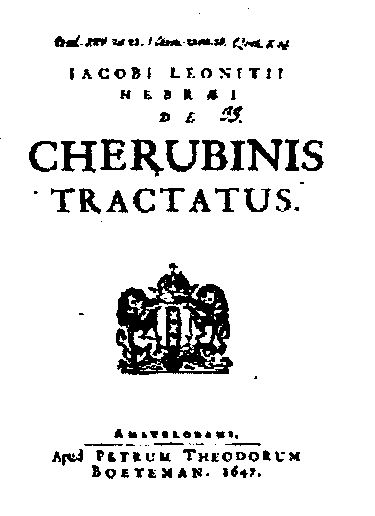
Figure 14. De Cherubinis tractatus
Courtesy of the Bayerische Staatsbibliothek

Figure 15. De Cherubinis tractatus
Courtesy of the Bayerische Staatsbibliothek
Templo, was also the author of additional titles in Spanish, including polemic works, some still in manuscript, among them Disputaciones con Diferentes Theologos de la Cristiandad. Another polemic work frequently credited to him is Colloquium Middelburgense, a disputation in Latin with Philip Limborch (1633-1712), that is, a dialogue between a rabbi and a Christian scholar assessing Christian dogmas. It is no longer believed that Templo was the author of that work.20
V
We would be remiss if mention was not made of Templo’s son, Solomon Judah Leao Templo (d. c. 1733), who was responsible for the family name Templo. He was a teacher in the Jewish congregational school in Amsterdam and authored a Hebrew grammar in Portuguese entitled Reshit Ḥokhmah, Principio de sciencia Grammatica Hebrayca por hum Methodo Breve (Amsterdam, 1703) as well as sermons in Portuguese. Together with R. David Nuñes Torres, he was the corrector of an enlarged edition of Maimonides' Yad ha-Ḥazaḳah (Amsterdam,1703)21 Another work, published posthumously by his son Isaac was Masseket Halakah le-Mosheh mi-Sinai (Amsterdam, 1734) on the hermeneutical rules of the Talmud followed by rules for Passover in quatrain format.
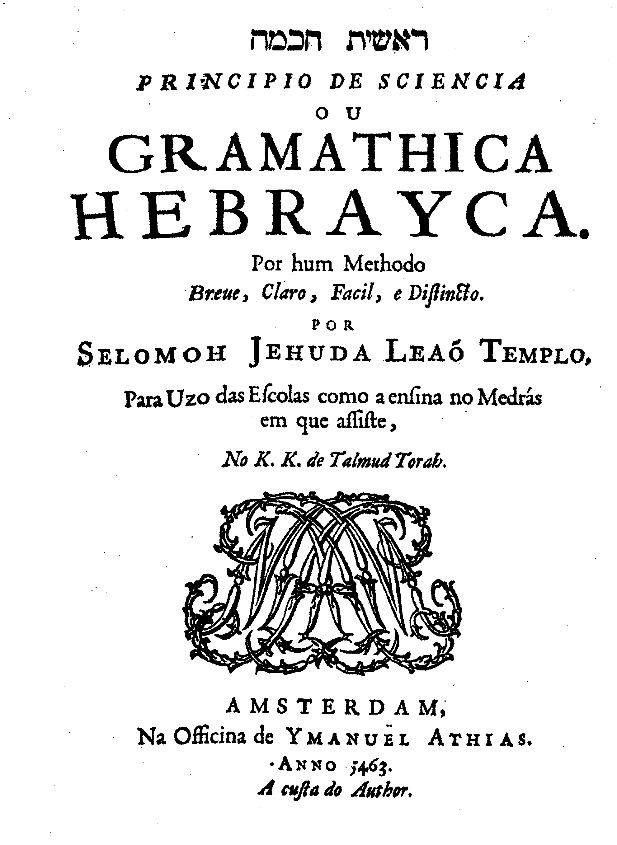
Figure 16. Reshit Ḥokhmah, Principio de sciencia Grammatica Hebrayca Reshit Ḥokhmah
Courtesy of the National Library of Israel
VI
R. Jacob Judah (Aryeh) de Leão Templo is, as noted at the beginning of this article, a multi-faceted and intriguing individual.22 His works are varied, including a vocalized edition of Mishnayot, an edition of Psalms in Spanish with accompanying paraphrase and glosses, polemics, and, on the first Temple in Jerusalem and the Tabernacle. The last of these books were translated into several languages and frequently reprinted, and it is due to these works that Templo is best remembered today.
Apart from his published titles, Templo served as a communal rabbi and a teacher of Talmud. Also, as noted above and well beyond the scope of this article, is that in many ways his life reflects the converso experience, of which he was part. His parents had been part of the expulsion of the Jews from Spain and Templo’s birthplace, whether Portugal or Hamburg remains unclear.
Templo’s works were recognized early on in bibliographic sources. Shabbetai Bass, (1641-1718) records Tavnit Hekal in his Siftei Yeshenim (Amsterdam, 1680). Giovanni Berardi De Rossi (1742–1831), in Dizionario Storico degli Autori Ebrei e delle Loro Opere (Dictionary of Hebrew Authors) has an entry on Templo in which he describes his works. He writes that Templo was “famous for the new and remarkable subjects treated therein, for their deep learning and for the brevity with which they were written.”23
Templo’s influence extended to the coat of arms of the English Grand Lodge of Masons which was adapted from his work on the Temple with the motto, in Hebrew, “Holiness to the Lord.” We conclude, to reiterate, that R. Jacob Judah (Aryeh) de Leão Templo was a multi-faceted and intriguing individual, one of many varied accomplishments.
1 llustrations are courtesy of Library of Agudas Chassidei Chabad Ohel Yosef Yitzhak, Google books, Kestenbaum & Co., the National Library of Israel, and Virtual Judaica.
2 Marvin J. Heller is an award winning author of books and articles on early Hebrew printing and bibliography. Among his books are the Printing the Talmud series, The Sixteenth and Seventeenth Century Hebrew Book(s): An Abridged Thesaurus, and several collections of articles.
3 A. K. Offenberg, “Jacob Judah de Leon Templo’s Broadshett of his Model of the Temple,” Bibliotheca Rosenthaliana: Treasures of Jewish Booklore (Amsterdam, 1996), p. 32.
4 Jacob Judah (Aryeh) de Leão Templo. Engraving by Salom Italia, 1641. Salom Italia was a Jewish Italian copper engraver in Amsterdam whose other well-known works include an engraving of Manasseh Ben Israel and illustrations for the Book of Esther.
5 A. L. Shane. “Rabbi Jacob Judah Leon (Templo) of Amsterdam (1603?1675) and his connections with England,” Transactions & Miscellanies (Jewish Historical Society of England), Vol. 25 (1973-1975), p. 120.
6 Shane, ibid. pp. 120-21.
7 Cecil Roth, A.K. Offenberg, “Templo, Jacob Judah (Aryeh) Leon” Encyclopaedia Judaica, vol. 19, (2007), p. 635; Offenberg, “Bibliotheca Rosenthaliana: Treasures of Jewish Booklore.
8 A. K. Offenberg, “Bibliography of the Works of Jacob Jehudah Leon (Templo), Studia Rosenthaliana, (1978) V. 12, No. 1/2, pp. 111-132.
9 A. K. Offenberg, ibid., p. 115.
10 L. Fuks and R. G. Fuks‑Mansfeld, Hebrew Typography in the Northern Netherlands 1585‑1815 I (Leiden, 1984), pp. 193-94 no. 266; Mozes Heiman Gans, Memorbook. History of Dutch Jewry from the Renaissance to 1940 with 1100 illustrations and text (Baarn, Netherlands, 1977), pp. 37-38; K. Meyer Kayserling, Biblioteca Espanola-Portugueza-Judaica (1890, reprint with Prolegomen by Y. H. Yerushalmi, New York, 1971), p. 58; De Rossi, p. 115; Cecil Roth, A Life of Menasseh ben Israel, Rabbi, Printer, and Diplomat (Philadelphia, 1945) pp. 127-28.
11 Afbeeldinghe vanden Tempel Salomonis was sold at auction by Kestenbaum & Co. May 2, 2018, Lot 216. Estimated price was $6,000-$9,000, realized price was $16,000. The temple image is courtesy of Kestenbaum & Co.
12 Roth, Offenberg, “Templo, Jacob Judah (Aryeh) Leon” EJ.
13 Heinrich Graetz, History of the Jews, V (Philadelphia, 1956), pp. 114-15.
14 Steven Nadler, Menasseh Ben Israel: Rabbi of Amsterdam (New Haven and London, 2018), p. 106.
15 L. Fuks and R. G. Fuks‑Mansfeld, Hebrew Typography in the Northern Netherlands 1585‑1815 I (Leiden, 1984), pp.109, 129 no. 180. An earlier vocalized Mishnayot was published in Constantinople in 1643.
16 Adam Boreel has been the subject of several works, most recently Francesco Quatrini, Adam Boreel (1602-1665): A Collegiants Attempt to Reform Christianity (2020).
17 Adler, pp. 135-36, 253 n. 18.
18 Parenthetically, Willem Surenhuizen (1666-1729) included two hundred of Templo’s engravings in Versio Latina Mischnae (1698-1703), his Latin translation of the Mishnah. Mozes Heiman Gans, Memorbook: History of Dutch Jewry from the Renaissance to 1940 with 1100 Illustrations (Baarnm 1977), p. 37.
19 Julius Fürst, Bibliotheca Judaica: Bibliotheca Judaica; bibliographisches Handbuch der gesammten jüdischen Literatur mit Einschluss der Schriften über Juden und Judenthum und einer Geschichte der jüdischen Bibliographie, II, Hildesheim, 1960,” p. 233.
20 Gotthard Deutsch Meyer Kayserling “Leon (Leão),” vol. 8 Jewish Encyclopedia, pp. 1-2; Roth, Offenberg, “Templo, Jacob Judah (Aryeh) Leon” EJ.
21 The title-page of Reshit Ḥokhmah, published by Immanuel Athias, has a pressmark consisting of the mirror-image of Athias’ initials MJA. Concerning mirror-image monograms employed as pressmarks, see Marvin J. Heller, “Mirror-image Monograms as Printers’ Devices on the Title Pages of Hebrew Books Printed in the Seventeenth and Eighteenth Centuries,” Printing History 40 (Rochester, N. Y., 2000), pp. 2-11, reprinted in Studies in the Making of the Early Hebrew Book (Brill, Leiden/Boston, 2008), pp. 33-43.
22 The life and activity of R. Moses ben Baruch Almosnino (c.1515-c.1580), also a multi-faceted and eclectic scholar, was addressed in an earlier article. Concerning Almosnino see Marvin J. Heller, “Moses ben Baruch Almosnino: A Sixteenth Century Multi-Faceted Sephardic Sage in Salonika,” Sephardic Horizons, Vol. 11, 4 (2021).
23 Shabbetai Bass, Siftei Yeshenim (Amsterdam, 1680), p. 82 no. 4 [Hebrew]; Giovanni Berardi De Rossi, Dictionary of Hebrew Authors (Dizionario Storico degli Autori Ebrei e delle Loro Opere), translator Mayer Sulzberger translation, with a prolegomenon by Marvin J. Heller ( Lewiston, N. Y., 1999), p. 115.

